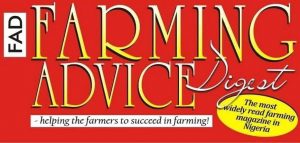Fish Farming Systems
Fish farming systems are diverse and can either be extensive or intensive in nature, closed or open systems. Polyculture, the culture of several species, may be practiced, or monoculture of a single species. Production may be conventional or organic, based on traditional or modern techniques.
Read also: 5 fish farming secrets that make you a millionaire
There are two main types of fish farming system currently in practice:
Extensive
Example: Irrigation ditch or pond system
 Learn More
Learn MoreAn extensive system is based on a semi-natural environment (e.g. existing ponds), with a natural food supply to the fish cultured (algae, crustaceans, zooplankton etc.). Production of food within the system can be increased by “fertilising” the pond (e.g. with animal waste). The natural balance within the system is maintained by stocking the ponds with a variety of fish occupying different ecological niches. For example, tilapia, which feed on algae, catfish, which feed off the pond bed, and species of carp, which feed on zooplankton. Care needs to be taken not to overstock the ponds or to over fertilise, which may cause algal blooms and oxygen depletion, leading to large scale mortalities.
Examples of fish reared: catfish, carp, tilapia.
Intensive
Examples: Integrated recycling system (completely closed system); Flow-through/raceway (semi-closed system); Floating cage system (open system)
Intensive systems are often closed-circulation tanks (e.g. trout farming) or flow-through raceways. However, floating sea cages are also intensive systems, which are open to the natural environment. In these systems, oxygen, water quality and food supply are closely controlled. The closed-circulation tanks have sophisticated water purification systems. This is a high cost method of fish farming (due to feed costs, equipment etc.), but the production rates are high and therefore offset the outlay. There is increased risk of disease (due to stocking density) and a high degree of monitoring and expertise is required to run an intensive system successfully.
Examples of fish reared: cages – salmon, sea bass, tuna; raceways – trout; tanks – tilapia, sturgeon.
Read also: Types of fish ponds you can use in Nigeria
Other methods:
Ranching
This method of production is extensive and can be considered as a form of “re-stocking” of natural populations. The fish are raised in captivity and then released to feed in the wild, to be recaptured when they have reached marketable size. Ranching works for species that are either migratory, returning close to the point of release (e.g. salmon), or non-migratory, remaining for at least a substantial portion of the life-cycle in a restricted area. The major problem with this method is that the fish are open to exploitation by other parties.
Examples of fish reared: salmon
For more information and updates join our WhatsApp group HERE
Follow us on Twitter Here











